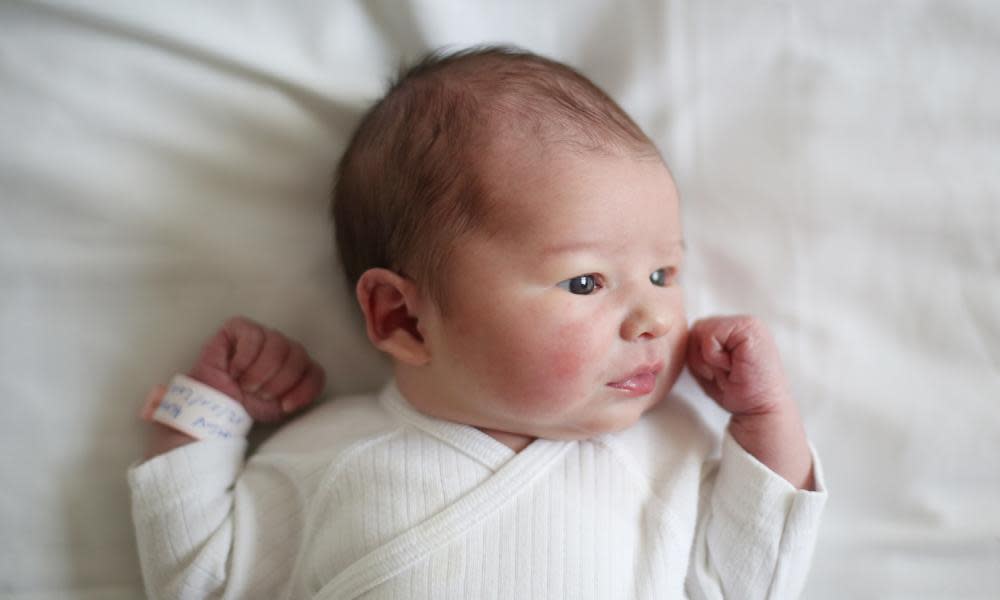Unexplained infant death rate falls to record low, says ONS

The unexplained infant death rate in England and Wales has fallen to its lowest level on record, official figures show.
The number of children under one who died from sudden infant death syndrome (Sids) or without a known cause fell to a record 183 in 2017, down 19% on the previous year. This means the unexplained infant mortality rate is 0.27 per 1,000 live births, almost half the rate in 2004, when records began.
In 2004, the number of deaths was 317 and the mortality rate was 0.50 per 1,000 live births.
Rabiya Nasir from the Office for National Statistics, which published the figures, said: “The new low comes after our last set of figures showed an increase between 2015 and 2016, and re-establishes the long-term trend. The fall in unexplained deaths may be due to factors such as fewer expectant mothers smoking and more awareness of safer sleeping practices.”
The previous lowest number of unexplained infant deaths was 195 in 2015. Concerns were raised about the 2016 figures when 219 cases were recorded, the highest number since 2013.
The ONS said the downward trend could be a result of advice and guidance from the NHS, the Welsh government and charities such as the Lullaby Trust, which runs public awareness campaigns on Sids and has helped train health professionals on the subject.
Overheating and an unsafe sleeping environment, such as the baby’s head being covered, have been linked with unexplained infant deaths, as have unplanned bed-sharing and sleeping with a baby on a sofa.
Other risk factors include being a boy, having a low birthweight or being born to a young mother.
Just over half (55.2%) of all unexplained infant deaths were boys in 2017, up from 51.3% the previous year. The mortality rate has been higher for boys in every year except for 2016 when it was the same as for girls.
The rate of deaths in 2017 was five times higher among low birthweight babies (those under 2.5kg, or 5.5lb) than babies with a normal birthweight of 2.5kg to 4kg.
Despite the progress in the unexplained infant mortality rate in England and Wales, it was more than twice the rate than in other advanced economies in 2017 and has been so every year except in 2005, 2011 and 2013.
The ONS suggests the difference in 2017 may partly be explained by the average age of the mother in England and Wales being lower, at 29.6 years compared with 31.3 years.
In 2017, the unexplained infant mortality rate in England and Wales was highest for mothers aged under 20, at 1.18 deaths per 1,000 live births. The lowest rate, 0.14 per 1,000, was women aged 30 to 34.
Jenny Ward, the chief executive of the Lullaby Trust, said the decline in unexplained infant deaths was extremely good news but warned against complacency.
“With a fall in the number of health visitors and early years services, we are concerned that not all families are receiving adequate support after the birth of their child. Without consistent access to safer sleep information for all families, increases in the number of deaths could occur. If all parents were made aware of how they can reduce the risk of Sids, we would see a much more significant reduction in the number of babies dying.,” she said.

 Yahoo News
Yahoo News 
